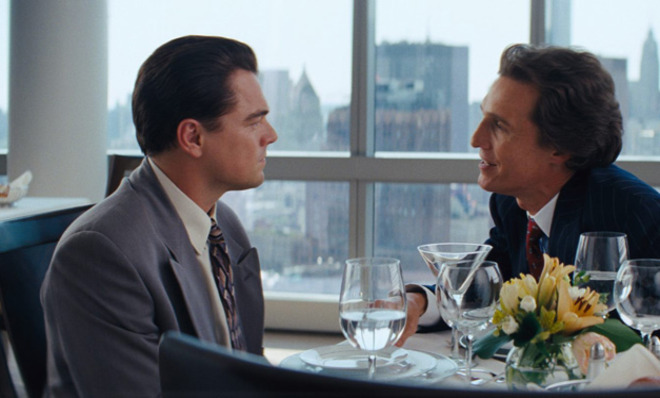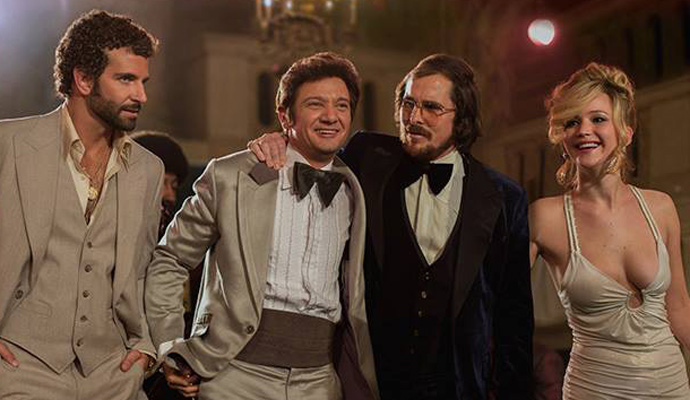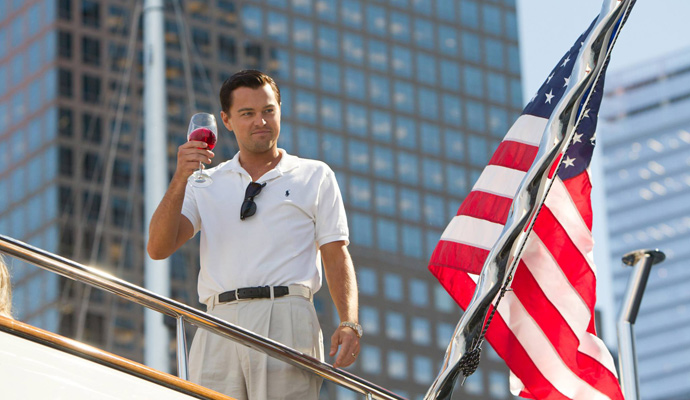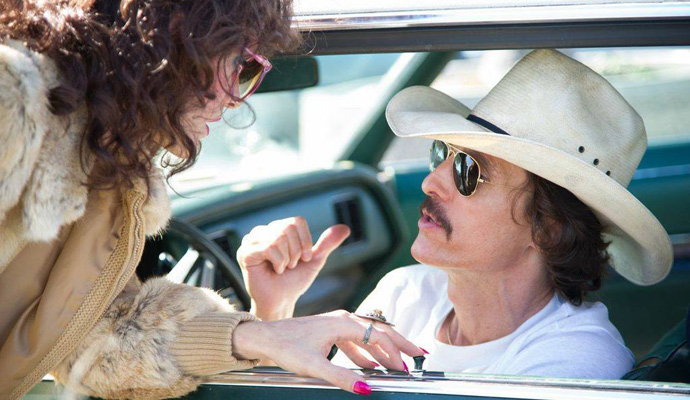Based on a true story? Fact-checking 5 Oscar contenders
How American Hustle, Inside Llewyn Davis, and The Wolf of Wall Street stack up against reality

Awards season kicks into high gear this weekend, with the Golden Globes set to crown winners that will probably go on to score more than a few Oscars in March. As always, the list of nominees is packed with films that claim to be based in reality — but a closer look reveals that they may not even resemble the truth.
If you missed it, we already fact-checked Saving Mr. Banks, 12 Years a Slave, The Butler, Captain Phillips, Philomena, and Mandela: Long Walk to Freedom. Check it out here.
And now, let's fact check five more of this year's contenders:
The Week
Escape your echo chamber. Get the facts behind the news, plus analysis from multiple perspectives.

Sign up for The Week's Free Newsletters
From our morning news briefing to a weekly Good News Newsletter, get the best of The Week delivered directly to your inbox.
From our morning news briefing to a weekly Good News Newsletter, get the best of The Week delivered directly to your inbox.
1. American Hustle
David O. Russell's star-studded period caper is based on the FBI's ABSCAM sting in the late '70s, which began as a simple investigation into stolen property but wound up implicating a number of corrupt public officials, including several members of Congress. In the film, Christian Bale stars as FBI informant Irving Rosenfeld — a character based on the real-life swindler Melvin Weinberg, who cooked up the idea of using agents dressed as Arab Sheikhs to lure potentially corrupt politicians into illegal deals.

American Hustle's title card concedes that only "some of these things actually happened," and mostly focuses on the characters surrounding the sting. But the film does leave out some of the key ramifications of ABSCAM, as Evan Hughes writes for Slate: "Abscam had some interesting postscripts that don't get aired in the movie. A debate that became central to the trial outlasted the case: Had the targets been entrapped? Didn't Weinberg put words in Senator Williams's mouth on that one tape? Apart from trying to impeach Weinberg's character, crying entrapment was just about the only defense that anyone could muster given the hard evidence. The Justice Department ended up overhauling the rules for undercover work to clarify what constitutes fair play."
A few other facts were changed for the film, such as the depiction of Camden Mayor Angelo Errichetti (who is rechristened Carmine Polito and played by Jeremy Renner in American Hustle). In real life, Errichetti was the big link between the slew of politicians eventually caught up in the sting and Weinberg and the FBI, who orchestrated it. As Jimmy So writes for The Daily Beast: "Christian Bale's Irving Rosenfeld liked Polito so much that he engineered a scheme to blackmail the FBI into giving Polito a reduced sentence. That's completely made up, although Weinberg did like Errichetti very much, not because he was a good man but because he was the biggest crook of them all. 'He's a likeable guy… he didn't beat around the bush,' Weinberg told 60 Minutes. 'He wanted to make money.'"
A free daily email with the biggest news stories of the day – and the best features from TheWeek.com
In addition, as So points out, American Hustle's FBI could only find a Mexican-American to pose as the Arab Sheikh. In real life, they started out with an agent who wasn't Mexican but didn't speak any Arabic, though they later managed to find a Lebanese-American to play the role.
2. The Wolf of Wall Street
Leonardo DiCaprio stars as famed Wall Street con man Jordan Belfort in Martin Scorsese's hedonistic look at the excesses of '80s and '90s finance culture. The Wolf of Wall Street has become somewhat controversial for its unapologetic (and non-stop) depictions of sex and drug use — so much so that DiCaprio and Scorsese themselves have had to defend the film. The movie is based on a memoir of the same name by Belfort, whose brokerage firm Stratton Oakmont defrauded investors, leading to Belfort's 1998 indictment for money laundering and securities fraud. As Eliana Dockterman points out at TIME, the fact that the film is based on Belfort's own memoir is problematic to begin with: "After all, Belfort was a scam artist — he made a living by lying. Scorsese, knowing this, portrays Belfort (Leonardo DiCaprio) as an unreliable narrator in the film."

The focus on Belfort is also, perhaps, why the film skipped over any depiction of his victims. Joel M. Cohen, a former assistant United States Attorney who prosecuted Belfort, writes for The New York Times that victims "don't figure in the Belfort books, though thousands have not been recompensed. Similarly, remorse is merely a convenient word for Mr. Belfort, sandwiched between stories of drug-addled fraud and nasty put-downs of those closest to him….The filmmakers have said that they didn't want to depict Stratton's victims because it would detract from their focus on the brutality of the wrongdoers. The details that animate a successful criminal prosecution don't always make for compelling on-screen storytelling."
As for some of the seedier elements depicted in the film, such as dwarf-tossing: Though this came straight from Belfort's book, it's been disputed by Danny Porush, the co-founder and former president of Stratton Oakmont, Belfort's former firm. "The book... is a distant relative of the truth, and the film is a distant relative of the book," he told Asawin Suebsaeng of Mother Jones. Though Porush did admit to eating a goldfish, as his on-screen counterpart Jonah Hill does in the movie, Porush says "there was never a chimpanzee in the office... we never abused [or threw] the midgets in the office; we were friendly to them...There was no physical abuse."

3. Inside Llewyn Davis
The unsuccessful Greenwich Village folk singer at the center of the Coen Brothers' Inside Llewyn Davis is a fictional character, but the film itself involves many composites of real people. Davis is loosely based on Dave Van Ronk, a folk singer living in the Village at the time, and Inside Dave Van Ronk was the album that inspired the film's title and the title character's own record. Though Van Ronk never made it big, he was integral to the scene, and, in fact, New York Times folk reporter Robert Shelton once labeled him "the musical mayor of MacDougal Street."

There are a lot of similarities between Oscar Isaac's Davis and the real Van Ronk. For instance, Van Ronk's past career as a merchant marine and his plan to give up music and return to the profession — a plan ultimately thwarted by his realization that he lost the necessary paperwork — were real. But Van Ronk did not start out in a duo, as Davis did, and was by many accounts not as much of a sad sack as Davis either. Van Ronk also has the distinction of being credited as a mentor to Bob Dylan, teaching him a thing or two about playing guitar, and even writing the version of "House of the Rising Sun" that Dylan later made famous (and possibly stole). "The character is not at all Dave, but the music is," Elijah Wald, who co-wrote Van Ronk's memoir, The Mayor of MacDougal Street, told the The New York Times.
As for the folk world in general, a number of people living the scene at the time have disputed the Coens' take on Greenwich during the era. "The performers reflect absolutely nobody I knew in the folk-music world," Van Ronk's first wife, Terri Thal, told Vulture. "The world that they live in is a depressing, unhappy place, and we lived in a fun, musically vibrant, intellectually interesting world. People were competitive only in the sense that they were trying to be heard — they weren't out to score above anybody else."

4. Rush
Ron Howard adapted this story of the bitter rivalry between motor racers James Hunt, a Brit played by Chris Hemsworth, and Niki Lauda, an Austrian played by Daniel Brühl, and how their relationship evolved throughout their parallel careers.

But, as Alex von Tunzelmann writes for The Guardian, the main conceit of the film is largely embellished: "In fact, judging by Gerald Donaldson's biography of Hunt, their rivalry was quite friendly. Hunt won a Formula Two race against Lauda at Oulton Park in 1972; Donaldson notes that Lauda and another driver, Ronnie Peterson, congratulated him and 'were genuinely happy to see James finally get a share of the success they felt he deserved'. Hunt — who was not in the habit of sugar-coating anything he said to the press — said: 'I got on very well with Niki and always had done since we first met in Formula Three and gypsied around Europe together. We raced against each other but we also teamed up as mates, not just casual acquaintances.'"
Though this inaccuracy is not exactly confidence-inspiring, one major part of the movie is real: James Hunt's incessant partying. As Grantland's Patricia Lee writes, Hunt was something of a lothario. "Hunt was believed to have slept with more than 5,000 women, 'sometimes having sex minutes before a race.' Apparently 'Hunt's appetite for wine and women was legendary.' Exactly how legendary? Well, Hunt slept with 33 British Airways stewardesses and a number of Japanese fans during his two-week stay in Tokyo for the 1976 Japanese Grand Prix."

5. Dallas Buyer's Club
Matthew McConaughey plays Ronald Woodroof, a Texas electrician who is diagnosed with AIDS and eventually sets up the titular drug ring that helped procure unauthorized AIDS drugs for those who couldn't afford AZT or had a negative reaction to it.

According to TIME, Woodroof did indeed smuggle the drugs across the border from Mexico, occasionally disguised as a doctor or a priest, and "even once filled a suitcase with dry ice when moving through customs in Japan to conceal drugs (after bribing a Japanese doctor for a shipment of drugs not-yet-approved in America)." The film is also accurate in its portrayal of Woodruff as an initially homophobic womanizer who remained in denial about his disease for some time, but who evolved as he came into contact with gay people through his work.
But other aspects of the film were purely fictional, including Woodruff's partnerships with Jared Leto's transgender character Rayon and Jennifer Garner's Dr. Eve Saks. As Aisha Harris writes for Slate: "[Co-writers Craig Borten and Melisa Wallack] interviewed a number of transgendered activists and doctors who faced similar struggles with access to drugs during the course of their writing, and they created composites of those people for the film...Rayon in particular was created as a character to give Ron a dramatic challenge to his prejudices while facing disease, Borten told me. The real Woodroof didn't have any particular Rayon in his life, but he was, in fact, deeply changed by his diagnosis and his subsequent work with the Dallas Buyers Club. The character arc, from bigotry to tolerance, does, Borten says, reflect Woodroof's own transformation from a homophobe to a compassionate advocate."

-
 Antibiotic resistance: the hidden danger on Ukraine’s frontlines
Antibiotic resistance: the hidden danger on Ukraine’s frontlinesUnder The Radar Threat is spreading beyond war zones to the ‘doorstep’ of western Europe
-
 ‘Capitalism: A Global History’ by Sven Beckert and ‘American Canto’ by Olivia Nuzzi
‘Capitalism: A Global History’ by Sven Beckert and ‘American Canto’ by Olivia NuzziFeature A consummate history of capitalism and a memoir from the journalist who fell in love with RFK Jr.
-
 Who will the new limits on student loans affect?
Who will the new limits on student loans affect?The Explainer The Trump administration is imposing new limits for federal student loans starting on July 1, 2026